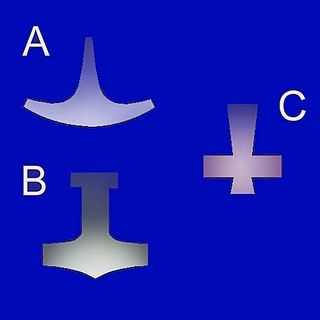Ukonvasara
Ukonvasara, or Ukonkirves, is the symbol and magical weapon of the Finnish thunder god Ukko, similar to Thor's Mjölnir. Ukonvasara means 'hammer of Ukko'; similarly, Ukonkirves means 'axe of Ukko'. It was said that Ukko created lightning with Ukonvasara.
This article has multiple issues. Please help improve it or discuss these issues on the talk page. (Learn how and when to remove these template messages)
|


Ukko's hammer was probably originally a boat-shaped stone axe. When stone tools were abandoned with the advent of metalworking, the origins of stone weapons became a mystery. Stone axes, so-called thunderstones (ukonvaaja in Finnish), were found in the ground, especially after drenching rains washed away dirt. They were believed to be weapons of Ukko, stone heads of the striking lightning. Shamans collected and held stone-axes because they were believed to hold the power to both heal and damage.[citation needed]
Followers of modern Finnish paganism sometimes carry hammer or axe pendants around their necks, much like Christians sometimes wear crosses.[citation needed]